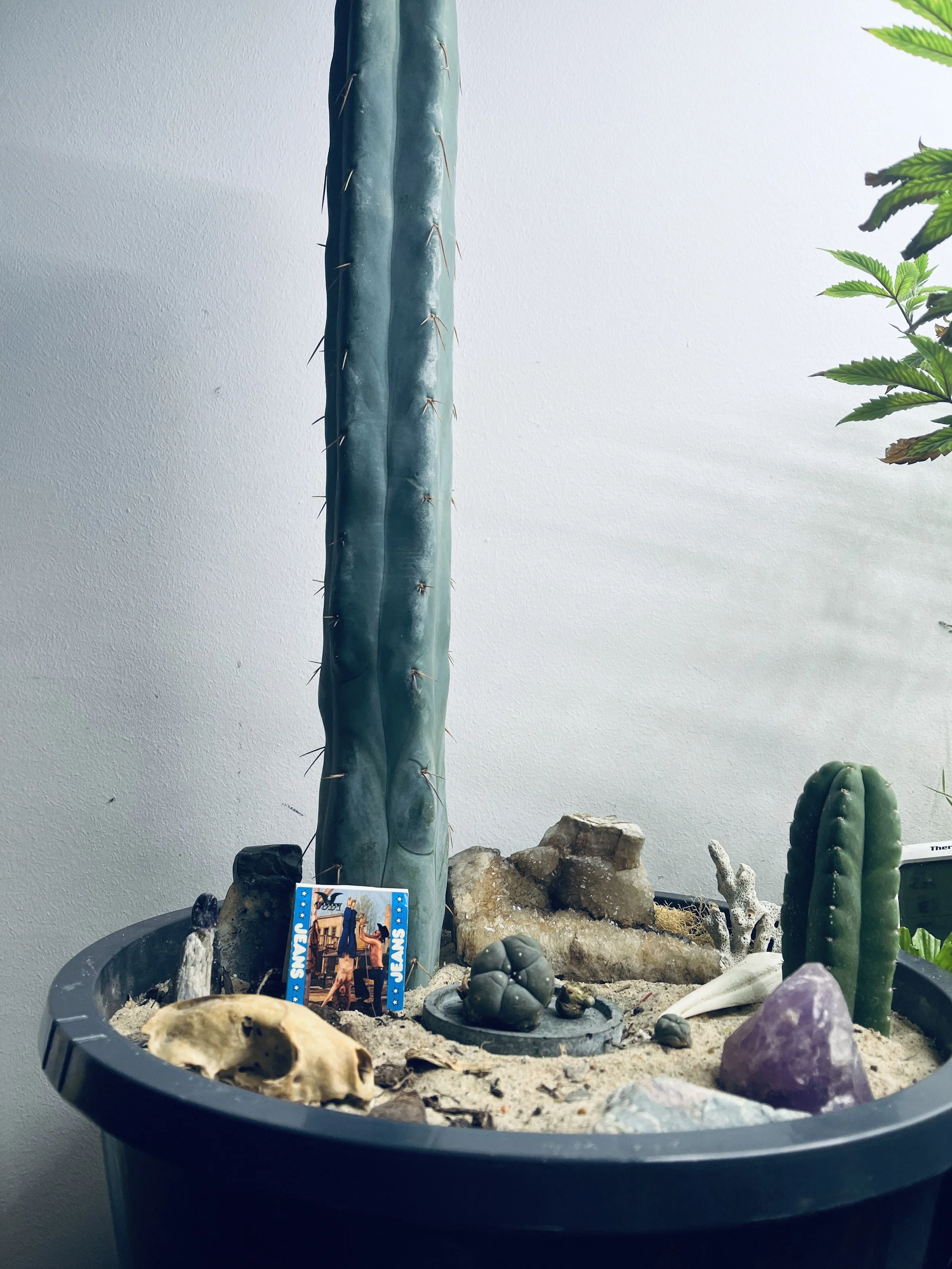When Life Has Other Plans: A Story About Peyote, Patience, and Letting Go
A year ago, I picked up two small peyotes. They were tiny—barely a few centimeters across—but there’s something about peyote that feels bigger than its size. These cacti carry a history that stretches back centuries, a history of ritual, resilience, and reverence.
For a year, they grew quietly, slowly. I didn’t rush them. With peyote, you don’t really have a choice. They operate on their own timeline, completely indifferent to our human obsession with speed.
A few days ago, I decided it was time to repot them. They’d earned a new home, and I wanted to give them something special. I chose one of my handmade sphere planters—a minimalist, earthy piece I’d made with my own hands. It felt like the perfect match.
But here’s the funny thing about “perfect.” It doesn’t exist. Not really.
The day after I placed the peyotes into their new home, I was working on setting up my secret psychedelic cactus garden. This isn’t just a collection of plants. It’s a sacred little corner of my world where I can disconnect, slow down, and immerse myself in the strange beauty of these incredible plants.
As I was arranging everything, I heard a loud bang from the other room. This one-of-a-kind, unique planter which I had propped up close to a grow light on what I must admit was a rather precarious setup had fallen, hit the ground, and shattered.
I looked at the broken pieces and something shifted. It felt like the universe was saying, “Here’s your chance. Don’t waste it.” It had several loose pups anyway and this would be a much better, easier, and frankly more perfect time to remove them and add them to my secret, sacred, psychedelic garden.
Removing peyote pups isn’t like pruning a houseplant. It’s a delicate process, and you have to respect the plant’s rhythm. Once you remove the pups, you have to let them callus over. This isn’t optional. If you try to rush it, they’ll rot. You have to wait for the wounds to dry, to harden, before they’re ready to root and grow on their own.
It’s not quick. It’s not easy. But that’s kind of the point.
According to a 2014 survey by the Cactus Conservation Institute, peyote populations in some regions have declined by nearly 30% over the past two decades due to habitat destruction and illegal harvesting. This underscores the importance of handling this sacred plant responsibly and with deep respect.
Peyote teaches you patience. It forces you to slow down, to respect the process. And in this world of instant gratification, that’s a lesson we all need.
Now, as I wait for the pups to callus, I’ve been thinking about how that broken planter never became a disaster. With one deep breath it stood as a reminder. A reminder that growth doesn’t always come from perfect conditions. Sometimes, it takes something breaking—literally or metaphorically—to make room for what’s next.
That’s the beauty of working with plants like peyote. They’re more than just decorations or a flex on Instagram. They’re teachers. Quiet, stubborn teachers who remind us that the best things in life can’t be rushed.
So, if you’ve been waiting for a sign to slow down, to let go of what you thought was perfect, or to trust the process even when it feels tedious—here it is.
And if you’re lucky enough to have a peyote of your own, remember: it’s not just a plant. It’s a reminder to breathe, to wait, and to let things grow in their own time or in otherwords, to just leave things the fuck alone.



